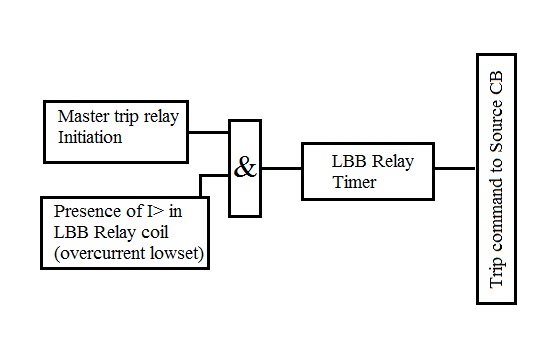DISTANCE PROTECTION

From the name itself it may lighten that it’s about the transmission line protection strategy.
Ø When do we need this?
We need to protect a long transmission line with good sensitivity and selectivity
Ø Why not over current Protection?
Of course it is possible
as it’s a cheaper. But not recommended where we need higher sensitivity and
selectivity. That is, if the load current and fault current are almost
comparable, overcurrent protection fails to distinguish between the two. Also
it is more susceptible in taking action with the change in fault location.
Ø Advantages over other methods
· Provides faster operation.
· Has the directional feature.
· Greater accuracy as more information is using for taking decision.
· As a backup protection for cable differential.
· Independent of source impedance.
· To detect fault location from the recorded fault impedance.
Ø How its working?
The Distance protection takes the Current and voltage with the direction as inputs and calculates the impedance (ZF). Then it compares with the line impedance (ZL). If ZF > ZL initiate trip else restrain.
For nearby faults the
current will be higher and voltage will be lower. Voltage and current will be
moderate for faults at moderate distance from the substation. And the Voltage
will be high and current will be low, if the fault is located at almost at the
end of the line.
If the Calculated impedance is less than the set impedance, then it is termed as under reach and else over reach. In a simple scheme at the point of ZMeasured = ZSet relay will be on the verge of operation/pick condition and for ZMeasured > ZSet relay will restrain. Based on this we could grade the protection as different zones.
There are three different
types of distance protection methods as per the ratio between V and I as follows
1.Impedance relay
It solely relies on the
impedance calculation only with considering magnitude of parameters. So it does
not have the directional feature. The output from CT and PT are fed to relay
and form torques proportional to the input. So, at normal conditions it
balances and while there is a fault the current increases and produces the
pickup (or the operating) torque and the restraining torque supplied by voltage
will fail to balance it. Which contributes to the relay contact for initiating
the trip.
Characteristics
of impedance Relay
The relay possesses only one set parameter which is ZSet.
As it’s a simple impedance relay there are some difficulties while handling the fault condition like it cannot discriminate the fault whether it is internal or external, not at all considering the arc that may be formed during fault, nuisance tripping initiation while power swings are present
But these demerits are
rectifiable with enhanced circuits.
2.Reactance Relay
Here the current provides
the operating torque while the restraining is introduced by current-voltage
element in order to have the directional feature. But the same directional unit
cannot contribute to directional feature for operation.
Characteristics
of Reactance Relay
The relay operates based
on the reactance only.so it does not bother about the resistance component in
the line impedance.
The set parameter is X. that is, for any value below set, the relay will produce
positive torque.
On the basis of
characteristics, its technically a non-directional relay and so, it is not
capable to discriminate neither faults near to relaying point nor the adjoining
section.
3.Mho or Admittance relay
The Mho relay is made directional by adding a polarising coil deduced from voltage. Now the operating torque is provided by the product of V&I and restraining by voltage element.
Characteristics
of Mho Relay
It’s the most versatile distance relay protection
strategy for long lines due to its faster operation, immune to most of the
power swings.
Simply, the performance
of distance relay is based upon the measurement of impedance, reactance or
admittance of line between the location of line and the fault location.






Comments
Post a Comment